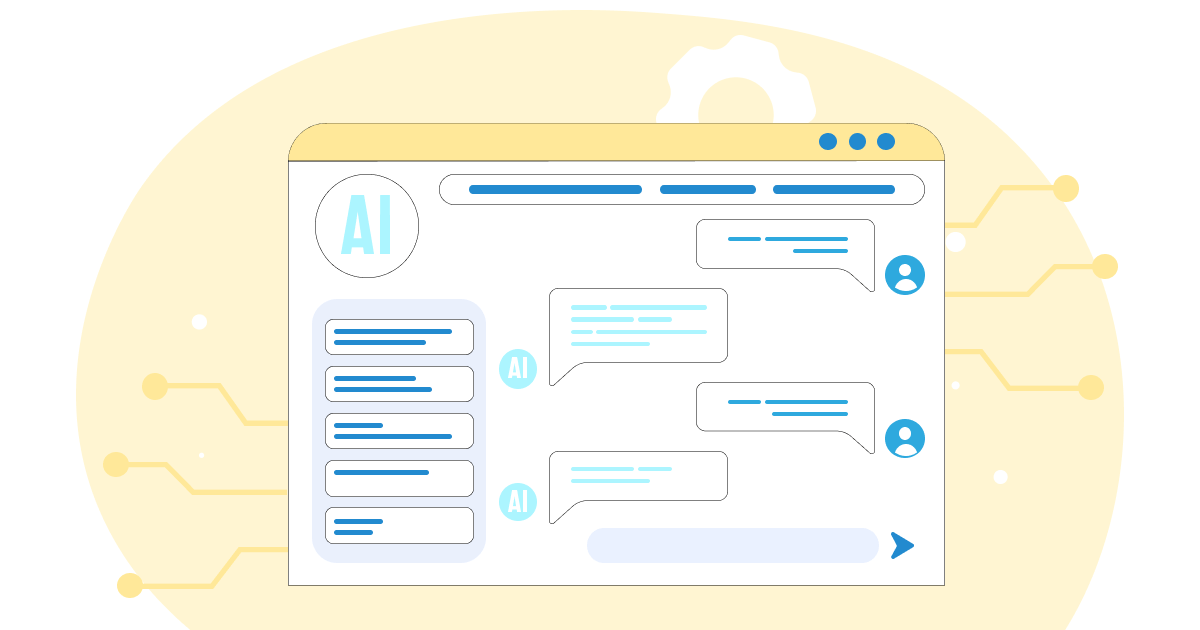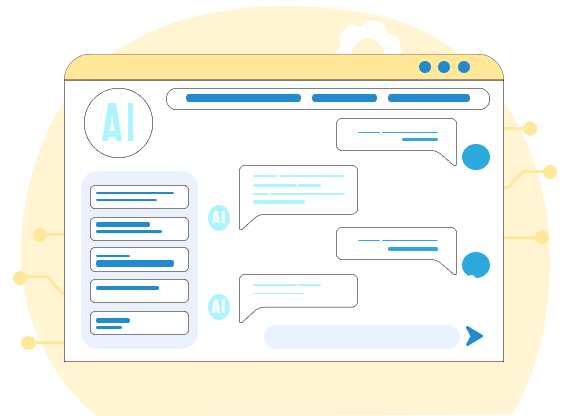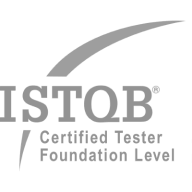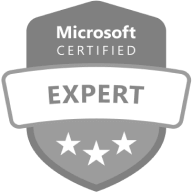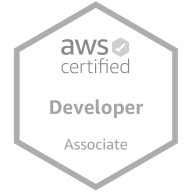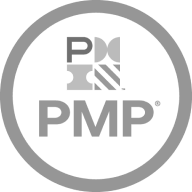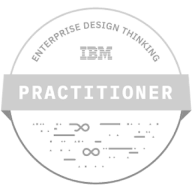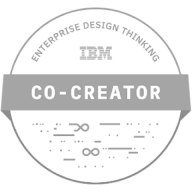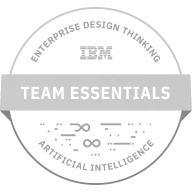
Software Product Development for Startups: The Ultimate Guide
Want to know more? — Subscribe
Do you know about one of the biggest challenges of digital product development in 2022? According to Reveal, these are high user expectations, as claimed by about 40% of surveyed developers. In this sense, establishing a well-thought-out process of software development for startups helps projects survive and become all the buzz.
As a multifunctional set of goals, the product-building process requires a holistic understanding of numerous activities and procedures: development, design, marketing, business, and target audience research.
Whether you want to launch an app or revamp a user interface, you need comprehensive and data-driven solutions to receive the desired result. Otherwise, the project might fail.
So, what is the software development process for startups? Let’s dig deeper and discuss the following:
- What digital product development methodology suits your goals
- What are the main phases of the development process
- How to effectively implement project development experience in the right niche
Softermii has a many-year experience in software development and over 100 satisfied clients worldwide. Our expertise spans various niches, from healthcare to FinTech, so we can share valuable insights on building a digital product or deliver one for you.
Specifics of the Software Development Process for Startups
Startups operate in a unique environment characterized by a lack of market power and financial leverage compared to established corporations and businesses. This reality shapes the startup software development process, requiring a different approach to ensure the success of their products.
Flexibility to adapt to changes
Startups need fast software development and the ability to adapt quickly to the ever-changing market conditions and customer needs. It requires an agile, iterative, and responsive development process. By adopting Agile methodologies, startups can iterate and refine their products continuously, ensuring they stay relevant and competitive.
Ability to pivot
Pivoting is a crucial aspect of startup success. It allows companies to change direction and focus on new opportunities when their initial idea is not yielding the desired results. The startup software development process must be designed to accommodate pivots with minimal disruption to the team's workflow and resources. It includes adopting modular architecture, using reusable components, and maintaining a strong focus on the product's core functionality.
Attention to user feedback
Startups rely heavily on their early adopters and users for feedback, as they often lack the resources to conduct extensive market research. It makes it essential for startups to incorporate user feedback into their software development process, using it to inform design decisions and prioritize features. By embracing a user-centric approach, startups can ensure that their products meet users' needs and expectations, leading to higher adoption rates and increased customer satisfaction.
Limited resources
Startups often have to work with limited resources, such as a small team, a tight budget, and constrained timelines. It requires the software development process to be lean, efficient and focused on delivering maximum value with minimal overhead. To achieve this, startups can employ strategies such as prioritizing critical features, using open-source tools and libraries, and leveraging cloud-based services to reduce infrastructure costs.
Collaboration and communication
Effective communication and collaboration are essential for startups, as they often involve cross-functional teams working together to bring a product to market. The software development process should emphasize clear communication channels, regular meetings, and shared project management tools to ensure everyone stays aligned and informed throughout the project.
Emphasis on innovation
Startups often thrive on their ability to innovate and bring fresh ideas to the market. The software development process should foster a culture of innovation, allowing team members to explore new ideas, experiment with emerging technologies, and learn from failures. It can help startups differentiate themselves from competitors and create unique value propositions for their customers.
The software development process for startups is unique and requires a different approach than that of established businesses. By emphasizing flexibility, adaptability, user feedback, resourcefulness, collaboration, and innovation, startups can navigate the challenges of the market and develop software products that drive their growth and success.
Key Stages of a Startup Software Development Process
The digital product development process is long-lasting — on average 4.5 months, and requires a comprehensive approach. If you want to make it hassle-free, let’s look at the main steps you’ll need to take before gaining a desirable result.
1. Planning or Discovery
Planning or the product discovery stage lays the cornerstone of software development. It allows for pointing out the product’s market fit, analyzing industry demands, and evaluating budgeting and other available resources. You cannot skip planning as you might omit some essential points that will eventually fail the entire product.
We can single out the following roadmap for successful planning:
- identify stakeholders
- research the subject
- set company goals
- set tech requirements
- design UI/UX wireframes
Well-thought planning ensures cost optimization, thorough user research, and a streamlined new product development process.
2. Strategic Brainstorming
Start with an in-depth analysis of the market and a meticulous plan. That means you should study customer behavior and understand market expectations to apply relevant methods. In turn, they must meet demand and match company strategy and resources.
Besides, it’s significant to estimate the startup product development procedure from different angles and outline its frames. You may use some tools to help you with that.
For example, you can find data.ai and Sensor Tower helpful for mobile analytics. Also, you can run your market analysis based on the Big 4 accounting firms (Deloitte, Ernst & Young, KPMG, and PwC). Use SimilarWeb, ZoomInfo, and Statista for analytical research.
Don’t forget to check out your milestones timely to track the product building process, assess current achievements, and improve possible flaws.
3. SRS Document
The next step you should take is to assemble a software requirements specification (SRS) document. It’s a written agreement and set of requirements for product development. This guide explains the software features and functions and illustrates stakeholders’ (users’ and businesses’) requirements.
A typical SRS consists of three components:
- a goal
- a summary of the product development procedure
- particular requirements
Software requirements specification documentation highlights critical information for every team involved in software product development. It allows you to track the lifecycle of your product. Plus, it cuts costs and speeds up the workflow. SRS ensures that everyone follows the same requirements — development, operations, maintenance, and quality.
4. Concept Design and Prototyping
When you’ve finished the initial stages, it’s time to create a concept design, a macro design, and a prototype.
Start with sketching and outlining technical and commercial features. It will help you understand what problems your software can solve and choose the best methodologies to cope with possible challenges. You’ll need all the previously collected information, research, and user inputs to customize your software to the industry’s demand.
You can use digital drawing tools to share and comment on your concept design within a team, simpler and faster.
- Photoshop is a multifaceted tool with lots of downloadable brushes and plugins.
- ZBrush suits modeling and texturing.
- ProtoPie allows for building complex interactions and highly interactive designs.
- InVision studio serves to level up your interactive interface.
- Figma is a vector graphics editor for designing web and app interfaces, social media posts, and prototypes.
Then, you can launch prototyping to understand how to develop software. This phase allows you to receive the logical and physical design, layout, and navigation. Moreover, you can estimate technological effectiveness, quality of the end design, and ultimate production cost. Find a design team to provide you with top-notch concept UI/UX and prototyping opportunities.
5. Development
This stage is a pivotal process of product development for startups. There, programmers write code in line with SRS documentation. You should expect the creation to be the longest software dev step. Programmers release alpha and beta versions, previously producing ready-to-use software. They match tech principles to the project requirements before testing the apps (including UAT testing).
Minimum Viable Product
A minimum viable product (MVP) is an initial version of a product with one feature that still offers enough value to users. You will use MVP to test your concept, fast software launch, and first revenue yield. Once you’ve completed all these steps, you can kick off the start-up’s full-fledged design.
For instance, Reface and Clubhouse are two unparalleled cases of record-beating app MVPs. Both companies show that currently, you have to offer a unique feature to stand out in the industry. The Clubhouse allows like-minded people to gather in virtual rooms. As for Reface, it’s an AI technology of swap animation. As we can see, the current MVP trend is behind sophisticated software and simple UI/UX design.
Keep going to figure out the other most popular MVP forms.
Software Prototypes
This form of MVP is the most complex because it requires developing the core components of the software. Foursquare used gamification as its initial feature to gain more users.
Product Designs
You can create a sketch or a mockup of a mobile app or software to visualize navigation and hierarchy of functions to understand better how the product will function.
Demo Videos
A demo video comes in handy when describing how your product works and highlighting its main features. You can evaluate your product’s suitability by showing these videos to your potential users. For example, long ago, DropBox emphasized the benefits of cloud storage and managed to collect users’ feedback to develop its offering.
Landing Pages
By launching a landing page, you can gauge public interest and reach out to a big audience with your proposal. You can get a base of cold leads by asking users to fill out a contact form. Besides, A/B testing allows you to check and define possible software errors or navigation problems on your future website.
Piecemeal
Mix components of different tools to provide a new product. It will allow you to demonstrate new features and see what kind of product is lacking on the market. Groupon started as a piecemeal MVP offering discounts for a limited time.
You can find more handy-on information on MVP application development from a concept to a ready-to-market product in our latest guidelines.
Proof of Concept
You may also jump into a proof of concept stage to test your assumptions and ideas. This phase is not mandatory, but it can show potential viability. So, you’ll get a comprehensive picture of whether a feature or a product is worth developing.
6. Testing
Finally, ensuring that your software is bug- or defect-free is critical. Hence, these steps will support your reputation as a solid enterprise in the industry. You can solve all possible problems before product delivery and grant exquisite quality to your users.
Choose different software development metrics to ensure high performance, security, and reliability. Apply manual and automated testing practices to verify that all features function flawlessly. You can use both methods or only one of them. First, people may conduct manual testing with special tools and interact with developed software. Then, run automated testing to cut down errors and detect typos in the script.
Read also: SaaS Product Metrics That Help Businesses Grow.
As you can see, creating an MVP is not a piece of cake. Trying to do it from scratch independently has lots of pitfalls. It is getting more and more common to hire a dedicated professional team for that. Thus, you will use your resources more wisely and focus on what matters to your business.
Choosing such a team for an expert MVP service allows you to have more testing iterations and check what strains of your product work better. Moreover, with professionals working on your MVP, you can be sure about the high-speed development and getting your product fast.
How to Speed Up a Software Development Process for Startups
For startups, speeding up the software development process can be crucial to staying ahead of the competition and achieving market success. Here are some practical tips and strategies that can help startups accelerate their software development process:
Set clear goals and priorities
Establishing clear objectives and priorities from the outset can help the team focus on delivering the most important features first. It ensures that the development process remains streamlined and efficient, minimizing the risk of wasted time and resources.
Embrace Agile methodologies
Agile methodologies, such as Scrum and Kanban, promote continuous improvement and rapid iteration. By embracing these approaches, startups can quickly adapt to changing requirements, gather user feedback, and refine their products more efficiently.
Implement Continuous Integration and Continuous Deployment (CI/CD)
CI/CD practices help automate the integration and deployment of code, reducing the time spent on manual tasks and increasing the speed of development. By implementing CI/CD tools and practices, startups can identify and resolve issues faster, resulting in higher-quality software.
Use modular architecture and reusable components
Designing software with modular architecture and reusable components can significantly speed up the development process. By breaking the software into smaller, more manageable pieces, the team can work on different modules simultaneously, reducing the overall development time.
Collaborate and communicate effectively
Ensuring team members communicate effectively and collaborate closely can help prevent misunderstandings and duplicated efforts. Utilize project management tools and regular meetings to keep everyone informed and aligned throughout the development process.
Outsource when necessary
If your team needs more specific expertise or resources, consider outsourcing parts of the development process to experienced professionals. It can help speed up the project and ensure that the final product meets the highest quality standards.
Focus on Minimum Viable Product (MVP) development
Developing an MVP allows startups to bring a product to market quickly by focusing on the core features that deliver the most value to users. This approach enables startups to gather feedback and iterate on their product faster, resulting in better and more efficient development cycles.
Optimize the development environment
Ensuring developers have the right tools, hardware, and software can significantly increase their productivity. Invest in an optimized development environment that reduces bottlenecks and enables the team to work more efficiently.
Encourage learning and knowledge sharing
Fostering a culture of continuous learning and knowledge sharing can help the team stay up-to-date with the latest trends and best practices, ultimately speeding up the development process. Encourage team members to attend conferences, workshops, and webinars and share their learnings with the rest of the team.
Review and optimize the development process
Regularly reviewing and assessing the development process can help identify areas for improvement and optimization. By addressing any inefficiencies or bottlenecks, startups can continually refine their software development process and achieve faster results.
By implementing these strategies, startups can accelerate their software development process, allowing them to bring high-quality products to market more quickly and stay ahead in a competitive landscape.
SDLC Models of a Software Product Development Process for Startups
A software product development process for the multiple stages that a software dev company or an outsourced team takes to bring the idea of a product into reality.
No matter how revolutionary your idea is, its success depends on the process behind its development. Airbnb, Grubhub, and Spotify once began as startups and passed their way from the concept to multi-billion businesses. Why do some startups gain worldwide popularity, and others can’t even kick off as MVPs?
“The purpose of software engineering is to control complexity, not to create it,” states Pamela Zave, an American computer scientist at Princeton University.
Thus, companies rely on the software development life cycle (SDLC). The procedure implies building high-quality software within the shortest possible period, in line with the 7 phases of the SDLC.
The development life cycle phases involve:
- the assessment of the user’s needs
- research on customer behavior and marketplace competition
- creation and visualization of the roadmap
- concept design
- code development
- a minimum viable product creation
With SDLC models, you won’t miss a thing and will find the balance between different actions in a process of startup product developments. The table showcases 10 SDLC software product development methodologies’ principles and goals, plus defines matching needs and preferences.
|
Methods |
Principles |
Goals |
Projects |
|---|---|---|---|
|
Waterfall Model |
Sequential workflow Low customer involvement Strong project documentation |
Divide software development into different stages Define the goal at every phase of software product development Move to a new stage after finishing the previous one |
Customer Relationship Management (CRM) systems Point of Sales (POS) Human Resource Management Systems (HRMS) Supply Chain Management Systems Inventory Management Systems |
|
V-Model |
Sequential V-shape workflow Testing after each development phase Planning and building Testing and improving |
Mitigate project risks Ensure quality Cut expenses Improve communication between stakeholders |
Tax-related software Medical software products |
|
Iterative Model |
Production process split into small chunks Clear requirements Integration of new technologies Parallel development High-risk analysis |
Work on several iterations at once Deploy every single product build after its completion Make slight changes to the software |
Urban design apps Marketing solutions Graphic and UX design |
|
Spiral Model |
A mix of the Iterative model with some aspects of the Waterfall method Planning and task prioritization Engineering Early deployment of developed features and elements Evaluation |
Minimize medium or high risks Test every phase of the process Add extra features and elements when developing |
Creation of prototypes in the scope of large software |
|
Agile Model |
Daily team cooperation Constant workflow Project division into smaller parts Face-to-face communication between team members Regular feedback to the team |
Encourage changes and avoid documentation Increase customer satisfaction Constantly release software and get feedback Strict change control |
Small to medium-sized software developments like Lastpass Short-term projects |
|
Scrum Methodology |
Adaptability and flexibility Self-organized, cross-functional team The project is divided into sprints Three leading roles in a team: a product owner, scrum master, a scrum team |
Adopt changes promptly Stick to a strict workflow Raise high responsibility for every team member Meet and communicate daily |
Financial Services Data Analytics Engineering Construction Telecommunication E.g., IBM, Amazon, Yahoo, Netflix, Lego, Raynair |
|
Extreme Programming Methodology |
Simple forms, encouraging MVP development Team communication Flexibility to change processes and methods Customer feedback Strongly bonded team Highly experienced and motivated team |
Produce cutting-edge software Hold daily meetings Cut the project cost Apply automated units Run functional tests |
Long-lasting projects without specific requirements Small teams of 2 to 12 people |
|
Rad Model |
Skilled and committed team Prototype as a constituent part of the whole software No specific planning Fast adaptation to changing environment High client engagement with the process |
Develop reusable prototypes Deliver and test prototypes on the market |
Small teams, up to 8 people |
|
Software Prototype Model |
Fast identification of errors and missing functionality Flexible designing Integration of innovations Often team meetings |
Build, test, and fix prototype until the best final result |
Developing teams, startups |
|
Big Bang Model |
Fast and easy management Little or no planning Developers’ flexibility |
Provide fast adaptation of new developers Deliver the clear end result |
Small projects |

|
|||
Along with the phases of the software development life cycle, you may also carry out various supportive tasks like:
- requirements validation
- quality assurance
- configuration adjustment
- change management
Let’s have an in-depth look at each phase.
Read also: Cooperation Models for Software Development.
Frameworks of Software Product Development
Frameworks significantly facilitate digital product development, as they help manage all dev processes as efficiently as possible. We advise you to adopt one of the strategies to ensure a smooth implementation of your software. Here are some common options:
Working Backwards
Forget the step-by-step software development we mentioned today. This framework works in reverse to the traditional product-building process. Its essence is that the team imagines ready-made software to ensure that this product solves end users’ problems.
To do this, you must prepare a press release describing your product and its value. After that, you compare the imagined software solution with alternatives available on the market.
North Star Framework
This framework is built around the North Star metric. This metric reflects the value of your software to users in line with the revenues you get. The idea of this framework is to adjust the product development process in such a way as to obtain the best possible indicators of the North Star metric.
Job To Be Done
Job To Be Done, or JTBD, is a client-centric product development framework. It aims to study user needs as thoroughly as feasible and allows you to prioritize product features and other tech solutions following customer demands.
Opportunity Solution Tree
This framework is handy at the product discovery stage. Such a method is implemented as a diagram with the goals you want to achieve during software development. First, you describe the opportunities and devise solutions for their implementation.
Software Product Development Trends
Are you still in the process of forming a vision for your digital product? Then it will be helpful to learn about the latest trends in software development for startups, which you can leverage to create a cutting-edge product.
The latest trends in software development that are worth paying attention to are as follows:
- Using Agile methodology to improve the performance of your development team.
- DevSecOps (short for development, security, and operations) is growing in popularity and can help build reliable and secure software.
- Companies should work on constantly improving the level of user satisfaction, in particular through faster delivery of products, updates, or new features.
Keep these trends in mind as you begin building your startup digital product.
Softermii’s Experience in Software Development for Startups
It may seem that software engineering is straightforward. However, each case is unique and requires a personal approach and imagination. It takes not only coding talents to deliver the best results but also smart management of the processes. Here are some of Softermii’s cases to prove it.
Transforming Parta Video Chats into a Content Creation Platform
Parta is an innovative audio and video-conferencing application. It combines the features of the most popular social media platforms. People can use the Parta app to stay in touch with their relatives and friends, chatting, talking, watching videos, streaming, and browsing.
The Parta team requested we build an app that can unite multiple functions. So, our teams brainstormed and decided to design an all-in-one video chat app MVP. It was, in fact, a challenging task that led to several hurdles on our way:
- Firstly, we ran a business and market analysis. It aimed to figure out industry demand for the Parta app and allowed us to extract the core features that users were looking for.
- Secondly, we studied market needs and researched UX design peculiarities. It helped our specialists make the app relevant, competitive, and viral.
- Thirdly, we focused on usability and thus designed an easy-to-use and navigate interface.
Finally, we managed to handle all of them. Our team of 5 specialists could deliver an MVP in three months and launch the app in seven months. However, such projects usually need more time and a big team.
Moreover, we combined video conferencing, broadcasting, and social media features and optimized them for various screens. Today, the Parta user can easily access multiple features in one app: have video calls, stream videos, and find and donate content creators.
Helping Men with Grooming via an App for Dollar Shave Club
Dollar Shave Club (DSC) is an American men’s grooming company. It offers personalized packages and delivery of male shaving products, such as razor blades, handles, aftershaves, and the like.
DSC’s business model provides a monthly subscription. The clients receive razors and facial care products at a fixed price. As DSC’s goal was to reach out to more customers, they came to us with a request to improve the UX design of their mobile app.
Men 35+ were the target audience. Focusing on this group of customers, we improved app navigation. We used a neutral palette and shortened text descriptions. Also, we made an account easy to manage and place orders.
Apart from user experience, we focused on privacy to protect user data. Our specialists ran A/B testing to ensure high performance across devices. After the app release, DSC’s conversion rate increased, and so did the number of users — from 3,900 to over 500,000.
Reimagining UX Design of a PropTech Startup for Rently
Rently, an innovative app that helps to find apartments and houses for rent reached out to our team with a request to evaluate their app and suggest improvements. They were open to different but truly effective ideas, which could help boost the growth rate.
We started examining the user journey and, as a result, changed it. Our designers used new graphic solutions and refreshed the interface. The most challenging was adjusting a familiar brand identity to the brand-new design of the app. We changed the color pallet to blue and orange hues and complemented it with a gray background to bridge the gap among users of different ages.
Based on the in-depth research, we could reach our goal. Our UI/UX specialist applied a suitable layout to raise functionality. So even nowadays, Rently has no direct competitors among real estate startups.
Bottom Line
The software development process for startups is complex and comprises different elements. You should pay attention to key challenges when developing a product: ideation, market viability, product roadmap issues, and workflow management.
Ideation. It is the first checkpoint while developing a product. Generating an idea may sound simple but believe us, it is not. Bureaucracy, disengaged colleagues, and irrational discussions can become total show-stoppers. Proper brainstorming and creating suggestion bins can overcome this issue.
Market viability. Ideas may be profitable in your head, but the market can easily prove you wrong. It is crucial to evaluate the product’s perspective in the market even before starting the development. Yes, analyzing competitors and audiences, market size, and examining marketing sources is a must. Otherwise, lots of effort will go in vain.
Product roadmap issues. Clear vision is essential to ensure a seamless workflow and gradual development. Setting your priorities straight will guarantee you won’t have time pressure or get stuck at a certain stage.
Workflow management. Communication, organization, tracking — you know these buzzwords. Use tools like Jira and Trello to structure the processes. In the current ‘remote-working’ reality, you need a more data-intensive monitoring system to track staff performance.
We at Softermii strive to arrange our workflow so that all customers are satisfied with our services.
- Our savvy developers and designers monitor the industry to use proven tools and cutting-edge methods.
- We rely on our business analytics, which monitors the market and up-to-date trends to keep up with the times.
- Our team is constantly searching for effective promotion channels to reach a new audience and seek better revenue.
Do not hesitate and hire an experienced MVP development team with a proven background. Fill out the Contact us form, and we’ll get back to you to discuss all the details.
Frequently Asked Questions
Why does software product development matter?
Given the ubiquitous digital transformation that is actively taking place in various industries, having your software is a good idea. With the massive shift to the online environment, businesses must develop digital products to stay visible and competitive.
Why outsource software product development?
Outsourcing software development services has many advantages. In particular, it is an opportunity to optimize your budget, find unique talents anywhere in the world, and choose almost any convenient cooperation model.
How to choose a software product development partner?
First of all, you have to envision your product. Then you will understand what exactly you want to develop and for which niche. After that, you can start looking for a team. Check if your vendor has the relevant experience, review their portfolio, study testimonials from their past clients, and conduct a thorough interview.
What is the difference between product development and software development?
These terms are often used interchangeably, and it’s fair enough. However, if you delve into the essence of the concepts, then the product is more than just software. The software can be part of a specific product but not vice versa. A product combines many factors: it is a tech solution and a reflection of your brand and vision. Hence, product development involves considering marketing, design, etc.
How about to rate this article?
173 ratings • Avg 4.6 / 5
Written by:











